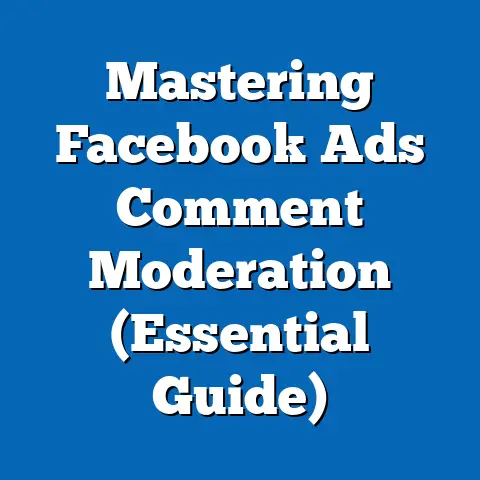Do All Facebook Games Have Ads? (Essential Insights Revealed)
Do All Facebook Games Have Ads? Essential Insights Revealed
Ever noticed your child glued to their tablet, thumbs flying across the screen, seemingly lost in a vibrant virtual world? Chances are, they’re playing a Facebook game. Gaming has become an integral part of many young lives, offering a blend of social interaction, entertainment, and even education. But behind the colorful graphics and addictive gameplay lies a complex world of monetization, and ads are a key player.
Gaming has exploded in popularity among children and teenagers, providing not just entertainment but also a way to connect with friends and learn new skills. From strategic challenges to creative simulations, Facebook offers a vast library of games catering to diverse interests. As a parent myself, I’ve seen firsthand how these games can captivate young minds. My niece, for example, once spent an entire afternoon building a virtual farm, meticulously planting crops and tending to animals. It was fascinating to watch her engage with the game’s mechanics and share her progress with her friends online.
However, the allure of free-to-play games often comes with a catch: advertising. These ads are the lifeblood of many game developers, enabling them to offer their creations without an upfront cost. It’s a trade-off: users get access to entertainment, and developers generate revenue. But this raises a crucial question: Do all Facebook games have ads, and what impact does this have on young players?
Section 1: Overview of Facebook Games
To understand the role of ads in Facebook games, it’s essential to understand the landscape of these games themselves. Facebook games have a rich history, a diverse range of genres, and a specific target demographic, all of which influence how advertising is integrated.
A Brief History of Facebook Games
Facebook games as we know them today didn’t just appear overnight. They evolved from simple applications to complex, immersive experiences. Back in the early days of Facebook, games like “FarmVille” and “Mafia Wars” dominated the platform. These games were simple but addictive, encouraging users to invite their friends and spend hours tending to virtual farms or building criminal empires.
I remember when “FarmVille” was all the rage. My newsfeed was constantly flooded with requests to water virtual crops or send gifts of digital fertilizer. It was a social phenomenon that brought people together (and occasionally annoyed others with the constant notifications).
These early games paved the way for more sophisticated titles. As technology advanced, Facebook games became more visually appealing and complex, offering richer gameplay and deeper social features. This evolution has made Facebook a significant gaming platform, attracting millions of players worldwide.
Types of Facebook Games
The variety of games available on Facebook is staggering. From brain-teasing puzzles to strategic simulations, there’s something for everyone. Here are a few common genres:
- Puzzle Games: These games challenge players’ problem-solving skills. Examples include “Candy Crush Saga” and “Bejeweled Blitz.”
- Strategy Games: Requiring tactical thinking and planning, these games often involve building and managing resources. “Clash of Clans” and “Forge of Empires” are popular examples.
- Simulation Games: These games simulate real-life activities, such as farming, city-building, or managing a business. “FarmVille 2” and “SimCity BuildIt” fall into this category.
- Adventure Games: Offering immersive storylines and exploration, adventure games engage players in quests and challenges. Examples include “Criminal Case” and “Hidden City.”
- Social Games: These games emphasize social interaction and collaboration, allowing players to team up with friends or compete against each other. “Words with Friends” and “Uno!” are popular social games.
This diversity ensures that Facebook games appeal to a broad audience, including children and adolescents with varying interests.
Target Demographic: Focusing on Children and Adolescents
While Facebook has a wide user base, many of its games are particularly appealing to children and adolescents. These young players are drawn to the colorful graphics, simple gameplay, and social features that many Facebook games offer.
Children and adolescents often use Facebook games as a way to connect with friends, unwind after school, or simply pass the time. The games provide a sense of accomplishment and can be a source of entertainment and social interaction.
However, targeting children and adolescents also raises concerns about privacy, safety, and the potential impact of advertising. It’s crucial for parents and developers to be aware of these issues and take steps to protect young players.
Popular Facebook Games Among Young Audiences
Several Facebook games have gained immense popularity among young audiences. These games often feature engaging gameplay, appealing graphics, and strong social components. Here are a few examples:
- Candy Crush Saga: This puzzle game is incredibly addictive, with its colorful candies and satisfying match-three mechanics. It’s easy to pick up but challenging to master, making it a favorite among players of all ages.
- FarmVille 2: Building on the success of the original “FarmVille,” this sequel offers improved graphics, more features, and a deeper farming experience. It’s a hit with children and adolescents who enjoy simulation games.
- Pet Rescue Saga: Another popular puzzle game from King, the creators of “Candy Crush Saga,” “Pet Rescue Saga” challenges players to save adorable animals by matching blocks and clearing levels.
- Criminal Case: This adventure game puts players in the role of a detective, solving crimes and uncovering mysteries. It’s a hit with older children and adolescents who enjoy immersive storylines.
- Gardenscapes: This puzzle and simulation hybrid combines match-three gameplay with garden renovation. Players solve puzzles to earn stars, which they can use to restore a beautiful garden.
These games have captured the attention of young audiences with their engaging gameplay, appealing graphics, and social features. However, they also raise questions about the role of advertising and its impact on young players.
Takeaway: Facebook games have evolved significantly over the years, offering a diverse range of genres that appeal to a broad audience, including children and adolescents. Understanding the history and types of these games is essential for understanding the role of advertising and its impact on young players.
Section 2: The Role of Advertising in Facebook Games
Advertising plays a crucial role in the Facebook gaming ecosystem. It serves as a primary revenue model for developers, enabling them to offer games for free. Understanding how advertising works in these games is essential for parents and players alike.
Understanding In-Game Advertising
In-game advertising is the practice of incorporating advertisements into video games. These ads can take many forms, from simple banner ads to immersive video ads. The goal is to generate revenue for the developer while providing players with access to the game.
In-game advertising has become increasingly common in recent years, especially in free-to-play games. It allows developers to monetize their creations without charging players an upfront fee. This model has made games more accessible to a wider audience, including children and adolescents.
Types of Ads Found in Facebook Games
Facebook games feature a variety of ad formats, each designed to engage players and generate revenue. Here are some common types of ads:
- Banner Ads: These are small, rectangular ads that appear at the top or bottom of the screen. They are typically non-intrusive but can be distracting.
- Video Ads: These are short video clips that play before, during, or after gameplay. They are more engaging than banner ads but can be disruptive.
- Interstitial Ads: These are full-screen ads that appear between levels or game sessions. They are highly visible but can be annoying if they appear too frequently.
- Rewarded Video Ads: These ads offer players a reward for watching them, such as extra lives, in-game currency, or special items. They are less intrusive than other types of ads because players have the option to watch them or not.
- Sponsored Content: This includes ads that are seamlessly integrated into the game’s environment, such as branded items or characters. They are less disruptive than traditional ads but can still be effective.
The type of ads used in a particular game depends on the developer’s monetization strategy and the target audience.
Why Developers Incorporate Ads
Developers incorporate ads into their games for a variety of reasons, primarily to generate revenue. Here are some key benefits of using ads:
- Free-to-Play Model: Ads allow developers to offer their games for free, making them accessible to a wider audience. This is especially important for games targeting children and adolescents, who may not have the means to purchase premium games.
- Revenue Generation: Ads provide a steady stream of revenue for developers, which they can use to fund further development, marketing, and support.
- User Acquisition: Ads can be used to promote other games or apps, helping developers acquire new users.
- Data Collection: Ads can provide developers with valuable data about player behavior, which they can use to improve their games and target advertising more effectively.
The free-to-play model has become increasingly popular in recent years, thanks to the revenue generated by ads. It allows developers to create engaging games and offer them to a broad audience without charging an upfront fee.
Statistics on Ad Revenue from Facebook Games
The ad revenue generated from Facebook games is substantial. According to industry reports, in-game advertising is a multi-billion dollar industry, with Facebook games accounting for a significant portion of that revenue.
- Global In-Game Advertising Revenue: The global in-game advertising market is projected to reach \$56 billion by 2024.
- Mobile Gaming Ad Revenue: Mobile gaming accounts for a significant portion of in-game advertising revenue, with Facebook games contributing a substantial share.
- Ad Revenue per User: The average ad revenue per user (ARPU) for Facebook games varies depending on the game and the target audience, but it can range from a few cents to several dollars per user per month.
These statistics highlight the importance of advertising as a revenue model for Facebook games. It allows developers to create engaging games and offer them to a broad audience without charging an upfront fee.
Takeaway: Advertising plays a crucial role in the Facebook gaming ecosystem, serving as a primary revenue model for developers. Understanding the types of ads used and the reasons why developers incorporate them is essential for parents and players alike.
Section 3: Are All Facebook Games Ad-Supported?
The question of whether all Facebook games are ad-supported is a complex one. While many Facebook games do feature ads, not all of them rely on advertising as their primary source of revenue. Understanding the different monetization strategies used by developers is essential for understanding the presence of ads in Facebook games.
Investigating the Assertion
The assertion that all Facebook games contain ads is not entirely accurate. While it’s true that many Facebook games rely on advertising to generate revenue, there are also games that use other monetization strategies, such as premium models or hybrid approaches.
To understand the presence of ads in Facebook games, it’s important to categorize them based on their monetization strategies.
Categorizing Facebook Games Based on Monetization Strategies
Facebook games can be categorized into three main types based on their monetization strategies:
- Ad-Supported Games: These games rely primarily on advertising to generate revenue. They are typically free to play but feature various types of ads, such as banner ads, video ads, and interstitial ads.
- Premium Games (One-Time Purchase): These games require players to pay an upfront fee to access the full game. They typically do not feature ads, as the revenue is generated from the initial purchase.
- Hybrid Models (Ad-Supported with Optional In-Game Purchases): These games combine advertising with in-game purchases. They are typically free to play but offer players the option to purchase virtual items, such as extra lives, in-game currency, or special items.
Understanding these different monetization strategies is essential for understanding the presence of ads in Facebook games.
Case Studies of Games That Do Not Feature Ads
While ad-supported games are common on Facebook, there are also several popular games that do not feature ads. These games typically rely on premium models or in-game purchases to generate revenue. Here are a few examples:
- Minecraft: This popular sandbox game requires players to purchase the game upfront. Once purchased, players have access to the full game without any ads.
- Terraria: Similar to “Minecraft,” “Terraria” is a sandbox game that requires players to purchase the game upfront. It does not feature ads and relies on the initial purchase for revenue.
- Stardew Valley: This farming simulation game requires players to purchase the game upfront. It does not feature ads and relies on the initial purchase for revenue.
These games have gained immense popularity without relying on advertising. They demonstrate that it’s possible to create successful Facebook games without incorporating ads.
The Impact of Ad-Free Experiences on Gameplay and User Satisfaction
Ad-free experiences can have a significant impact on gameplay and user satisfaction, especially for children. Without the distraction of ads, players can focus on the game and enjoy a more immersive experience.
Ad-free games also tend to be less disruptive, as players are not interrupted by ads during gameplay. This can lead to higher levels of user satisfaction and engagement.
For children, ad-free games can also be more educational and less manipulative. Without the constant exposure to marketing messages, children can focus on the game’s content and learn valuable skills.
Takeaway: Not all Facebook games are ad-supported. Some games rely on premium models or in-game purchases to generate revenue. Ad-free experiences can have a significant impact on gameplay and user satisfaction, especially for children.
Section 4: The Impact of Ads on Children
The presence of ads in Facebook games can have a significant impact on children, both positive and negative. It’s important for parents and developers to be aware of these impacts and take steps to protect young players.
Potential Benefits of Exposure to Advertisements
While many people view ads as a nuisance, they can also have some potential benefits for children. These benefits include:
- Brand Awareness: Ads can help children become aware of different brands and products. This can be useful in helping them make informed purchasing decisions later in life.
- Learning About New Products: Ads can introduce children to new products and services that they may not have otherwise known about.
- Entertainment Value: Some ads can be entertaining and engaging, providing children with a source of amusement.
However, these potential benefits must be weighed against the potential drawbacks of ad exposure.
Potential Drawbacks of Ad Exposure
The potential drawbacks of ad exposure for children are numerous and can have a significant impact on their development. These drawbacks include:
- Excessive Screen Time: Ads can encourage children to spend more time playing games, leading to excessive screen time. This can have negative effects on their physical and mental health.
- Exposure to Inappropriate Content: Ads can expose children to inappropriate content, such as violence, sexually suggestive material, or harmful stereotypes.
- Materialistic Tendencies: Ads can encourage children to develop materialistic tendencies, valuing possessions over experiences and relationships.
- Deceptive Advertising: Some ads can be deceptive, misleading children about the true value or benefits of a product.
- Privacy Concerns: Ads can track children’s online behavior, raising concerns about their privacy and security.
These potential drawbacks highlight the importance of protecting children from excessive ad exposure.
Insights from Experts on How Ads Can Influence Young Minds
Experts in child psychology and education have raised concerns about the impact of ads on young minds. They argue that children are particularly vulnerable to advertising because they lack the critical thinking skills needed to evaluate marketing messages.
- Child Psychologists: Child psychologists argue that ads can influence children’s self-esteem, body image, and values. They also point out that ads can create unrealistic expectations and encourage children to engage in unhealthy behaviors.
- Educators: Educators argue that ads can distract children from their studies and undermine their ability to focus. They also point out that ads can promote consumerism and discourage creativity.
These insights highlight the importance of protecting children from excessive ad exposure and teaching them critical thinking skills.
Takeaway: The presence of ads in Facebook games can have both positive and negative impacts on children. It’s important for parents and developers to be aware of these impacts and take steps to protect young players.
Section 5: Parental Perspectives and Concerns
Parents play a crucial role in managing their children’s gaming habits and protecting them from the potential negative impacts of advertising. Understanding parental perspectives and concerns is essential for creating a safe and enjoyable gaming experience for children.
Concerns Parents May Have
Parents have a variety of concerns regarding ads in Facebook games and their children’s gaming habits. These concerns include:
- Exposure to Inappropriate Content: Parents worry about their children being exposed to inappropriate content through ads, such as violence, sexually suggestive material, or harmful stereotypes.
- Excessive Screen Time: Parents are concerned about their children spending too much time playing games, leading to excessive screen time.
- Materialistic Tendencies: Parents worry that ads will encourage their children to develop materialistic tendencies, valuing possessions over experiences and relationships.
- Privacy Concerns: Parents are concerned about their children’s privacy being compromised by ads that track their online behavior.
- Deceptive Advertising: Parents worry that their children will be misled by deceptive ads that exaggerate the benefits of a product or service.
These concerns highlight the importance of parental involvement in managing children’s gaming habits.
Parental Controls and Settings on Facebook
Facebook offers a variety of parental controls and settings that can help parents manage their children’s ad exposure and gaming experiences. These controls include:
- Ad Preferences: Parents can adjust their children’s ad preferences to limit the types of ads they see.
- Privacy Settings: Parents can adjust their children’s privacy settings to control who can see their posts, photos, and other information.
- Activity Log: Parents can monitor their children’s activity on Facebook, including the games they play and the ads they click on.
- Reporting Tools: Parents can report inappropriate ads or content to Facebook.
These parental controls and settings can help parents create a safer and more enjoyable gaming experience for their children.
Balancing Enjoyment and Protection
Finding the right balance between allowing children to enjoy games and protecting them from excessive ad exposure can be challenging. Here are some tips for parents:
- Set Time Limits: Set reasonable time limits for gaming to prevent excessive screen time.
- Monitor Content: Monitor the games your children are playing and the ads they are seeing to ensure they are age-appropriate.
- Talk to Your Children: Talk to your children about advertising and help them develop critical thinking skills to evaluate marketing messages.
- Use Parental Controls: Use Facebook’s parental controls and settings to manage your children’s ad exposure and gaming experiences.
- Encourage Other Activities: Encourage your children to participate in other activities, such as sports, hobbies, and social events.
Finding the right balance between enjoyment and protection is essential for creating a healthy and positive gaming experience for children.
Takeaway: Parents have a variety of concerns regarding ads in Facebook games and their children’s gaming habits. Facebook offers a variety of parental controls and settings that can help parents manage their children’s ad exposure and gaming experiences. Finding the right balance between allowing children to enjoy games and protecting them from excessive ad exposure is essential for creating a safe and enjoyable gaming experience for children.
Conclusion
In conclusion, the presence of ads in Facebook games is a complex issue with significant implications for children. While not all Facebook games are ad-supported, many rely on advertising as a primary source of revenue. This can have both positive and negative impacts on children, ranging from exposure to marketing messages to potential disruptions in their gaming experience.
As the gaming landscape continues to evolve, it’s crucial for parents, developers, and policymakers to work together to create a safe and enjoyable gaming experience for children. This includes implementing effective parental controls, developing responsible advertising practices, and promoting critical thinking skills among young players.
The future of gaming on platforms like Facebook will depend on our ability to balance the benefits of free-to-play models with the need to protect children from excessive ad exposure. By prioritizing the well-being of young players, we can ensure that gaming remains a positive and enriching experience for all.
I hope this has helped you understand the world of Facebook games and advertising! It’s a complex landscape, but with a little knowledge and awareness, we can all make informed decisions about our children’s gaming habits.






